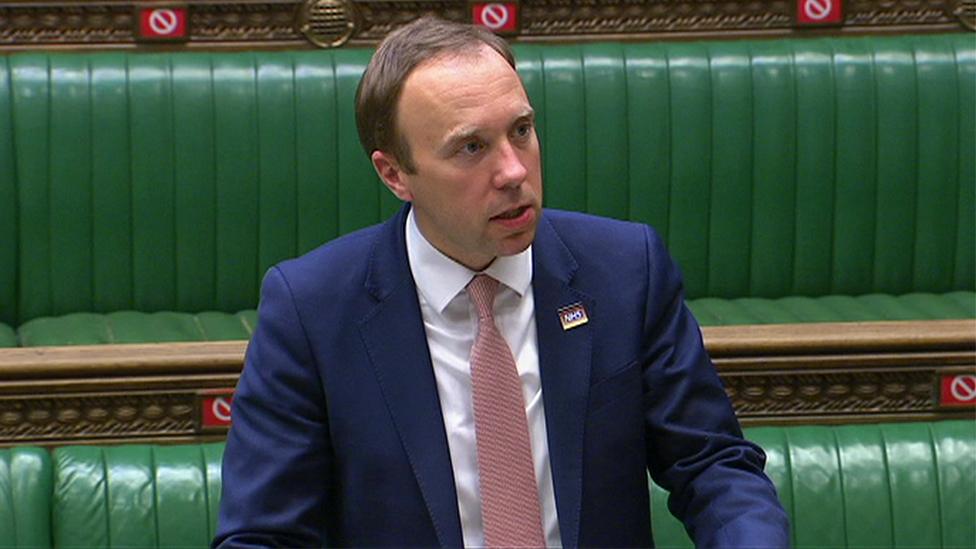India variant: Matt Hancock's red list claim fact-checked
- Published

There has been growing scrutiny of the government's decision to put India on the red list, weeks after neighbouring Pakistan and Bangladesh.
They were placed on the list on 9 April and India was added on the 23 April - days after Boris Johnson cancelled his trade visit to the country.
Asked in Parliament, on Monday, 17 May, why India had not been added earlier, Health Secretary Matt Hancock replied: "The truth is that when we put Pakistan and Bangladesh on the red list, positivity among those arriving from those countries was three times higher than it was among those arriving from India."
But Mr Hancock's claim is not supported by the publicly available NHS Test and Trace figures, external.

They show that between 25 March and 7 April, the proportion of travellers testing positive for coronavirus on arrival in the UK were:
from Bangladesh 3.7%
from India 5.1%
from Pakistan 6.2%
The government announced its decision , externalto add Bangladesh and Pakistan to the red list, on 2 April
We asked the Department of Health whether figures from a different source support Mr Hancock's claim - but it has not answered the question.
A spokesperson said: "All decisions on red, amber or green list assignment and our border regime are taken by ministers based on regular scrutiny of the latest scientific data, the Joint Biosecurity Centre's risk assessment and wider public health factors."
In response to an earlier request for evidence, the Department of Health told us that the only published data covered 26 March to 22 April but not more precisely, external the point when Pakistan and Bangladesh were added to the red list.
Thanks to Ed Conway, at Sky News,, external who managed to find the dataset for the period between 25 March and 7 April, which also reveals about half of positive tests from people arriving from the three countries were being sent for genome sequencing to identify variants of concern (VOC) or variants under investigation (VUI).
At the time, the variant identified in India was neither a VUI nor a VOC, so the tests were looking for the variants identified in South Africa and Brazil.
And the proportions in which they were found were:
from Bangladesh 75%
from India 52%
from Pakistan 2%
On 19 May, the health secretary was asked about his claim - and what the Test and Trace figures show - in Parliament.
Mr Hancock said: "The positivity rate in India, on which the decision to put Pakistan but not India on the red list was 1.6% in India and 4.6% in Pakistan, which is three times higher, as I said."
But those are not published figures. He did not give the date for them (so we cannot tell how rapidly India's rate climbed to the 5.1% recorded by 7 April) and he did not mention Bangladesh this time.
The statistical regulator has been clear, external that when unpublished information is "used publicly to inform Parliament, the media and the public, it should be published".
Update: Since this piece was published on 19 May, new government figures, external have been released on the positivity rate of travellers arriving in the UK. In one period - from 25 February to 10 March - the rate for arrivals from India was 1.6% compared with 5.0% from Pakistan and 1.5% from Bangladesh. However, these figures do not show that Bangladesh's rate was three times that of India's, as Mr Hancock claimed on 17 May.
The Department of Health has told us that the figures they prepare for ministers covered the period 3 March to 17 March and these are what the health secretary was referring to. These figures have not been published.

A SIMPLE GUIDE: How do I protect myself?
AVOIDING CONTACT: The rules on self-isolation and exercise
WHAT WE DON'T KNOW How to understand the death toll
TESTING: Can I get tested for coronavirus?
LOOK-UP TOOL: Check cases in your area



